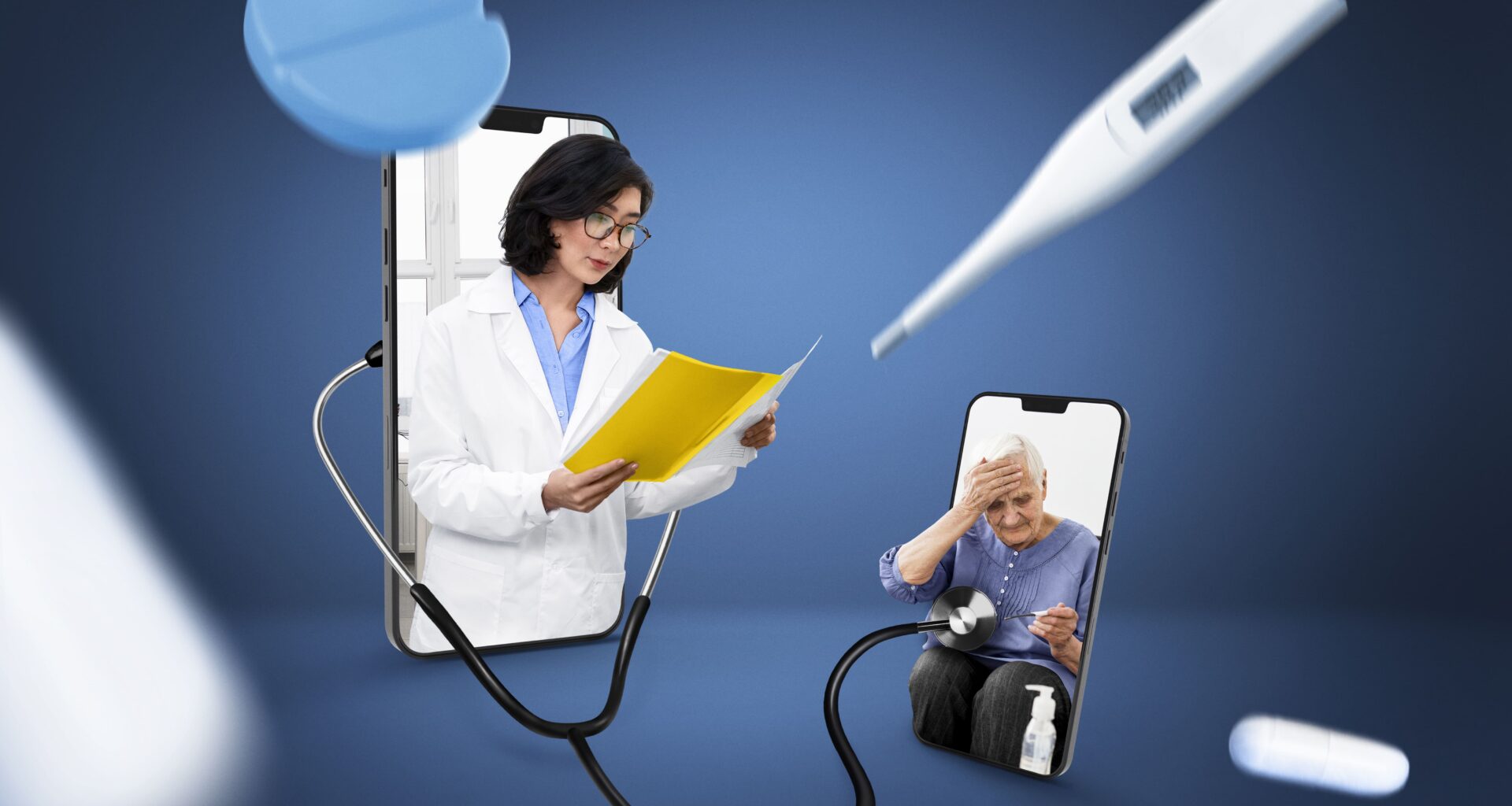Did you know? According to a recent market brief by MarketsandMarkets Research Group, the global size for remote patient monitoring (RPM) market was estimated at $71.9 billion in 2023 and is poised to reach $207 billion by 2028, reflecting a significant 23.6% growth rate during this period. This explosive growth outlines the increasing adoption of remote health monitoring technology, facilitating healthcare providers to collect patient health data remotely outside traditional clinical settings.
Beyond this, the RPM offers an array of advantages for both patients and providers. For instance, it enables patients to conveniently manage their health from home while providers gain valuable insights into their patient’s health beyond the limited snapshot offered by in-office visits. However, this technological trajectory necessitates a robust regulatory framework to ensure patient privacy, data security, and overall effectiveness of care.
This post dives deep into the evolving regulatory landscape of remote health monitoring, exploring the need for clear regulations, key considerations like Health Insurance Portability And Accountability Act (HIPAA) rules for remote monitoring, and how industry trends are shaping the future of RPM compliance.
The Need For Clear Regulations In Remote Care Delivery
As RPM technology becomes more sophisticated, clear regulations are crucial to ensure the following parameters:
- Patient Data Privacy And Security
With increasing cybersecurity risk, securing sensitive patient data collected through RPM devices is imperative. The Health Insurance Portability And Accountability Act has an integral role to play here. HIPAA rules for remote monitoring mandate healthcare providers to enforce secure measures to protect patient data during transmission, storage, and access. This approach includes actions like encryption, access controls, and regular security audits.
- Device Efficacy And Data Accuracy
The effectiveness of RPM hinges on the accuracy and reliability of the data collected. Regulations ensure that RPM devices undergo rigorous testing and meet exact performance standards. This process can potentially flag devices generating inaccurate data that could lead to misdiagnosis or improper treatment decisions.
- Reimbursement And Cost-Effectiveness
For RPM to gain widespread adoption, clear guidelines for reimbursement by insurance companies are necessary. Regulations can help specify the types of RPM services suitable for reimbursement and establish criteria for cost-effectiveness, ensuring that the benefits of remote monitoring outweigh the associated costs.
Key Regulatory Considerations For Remote Patient Monitoring
The regulatory landscape for RPM involves two key players: The HIPAA and the Food and Drug Administration (FDA).
HIPAA Rules For Remote Monitoring
- Patient Authorization And Consent: HIPAA mandates that patients be informed about how their data will be collected, used, and disclosed during remote monitoring. They must provide written authorization before their data can be used for RPM purposes.
- Security Measures: Care providers using RPM technology must appropriately protect patient data throughout its lifecycle. This includes encryption to protect data transmission, access controls to restrict unauthorized access, and standard security risk assessments to identify and mitigate vulnerabilities.
- Incident Response: It is recommended that a robust incident response plan be built. In a way that during data breaches or security incidents, HIPAA requires providers to take swift action to investigate the event, notify affected individuals, and report the incident to the Department of Health and Human Services (HHS).
FDA Regulations For RPM Devices
- Device Classification And Clearance: Depending on the complexity and intended use of an RPM device, the FDA may categorize it as Class I (low risk), Class II (moderate risk), or Class III (high risk). Each classification has its own set of regulatory requirements for premarket clearance. Manufacturers must reveal the device’s safety, effectiveness, and adherence to relevant standards.
- Data Security Features: The FDA underscores the importance of data security features built into RPM devices. This includes encryption capabilities, secure user authentication, and tamper-evident features to unauthorized data manipulation.
- Clinical Trial Requirements: For high-risk RPM devices (Class III), the FDA it is a standard protocol for manufacturers to execute clinical trials to verify the device’s safety and efficacy before granting marketing authorization.
Industry Trends And The Regulatory Landscape
The evolving healthcare landscape is constantly shaping the regulatory environment for RPM. Here are some of the critical trends that are influencing regulations:
- The Rise Of Telehealth: The growing acceptance and integration of telehealth with RPM impact regulations. Regulatory bodies strive to create a unified framework for remote care delivery compliance as the lines between remote monitoring and virtual consultations blur.
- Focus On Value-Based Care: The shift towards value-based care models, which reward positive patient outcomes rather than the volume of services provided, affects how RPM is reimbursed. Regulations are evolving to ensure these technologies demonstrate measurable improvements in patient health and cost-effectiveness.
- Increased Patient Engagement: As patients become more active in managing their health, regulations may adapt to accommodate patient-generated health data (PGHD) collected through wearables and other personal monitoring devices. This raises questions about data ownership, privacy, and integration with RPM.
- The Use Of Artificial Intelligence In Healthcare: AI integration in RPM devices offers compelling possibilities for data analysis and personalized care interventions. However, regulations need to address potential bias in AI algorithms and ensure the transparency and explainability of AI-driven decision making in the context of RPM.
The Future Of RPM Regulations – A Collaborative Approach
Looking ahead, the future of RPM regulations will presumably be shaped through a collaborative effort between various stakeholders:
Regulatory Bodies: The Centers for Medicare & Medicaid Services (CMS), the FDA, and HIPAA regulators will continue to refine regulations to manage emerging technologies and evolving industry practices.
Healthcare Providers: Providers play an integral role in developing and deploying best practices for the secure and practical use of RPM technology while adhering to regulatory requirements.
Technology Companies: Device manufacturers and software developers have a responsibility to ensure their RPM solutions are developed with full-proof security features and comply with relevant regulations.
Patients: Patients’ perspectives and concerns regarding data privacy and security need to be considered when designing future regulations for RPM.
In Conclusion – Balancing Innovation With Protection
The rapid growth of remote health monitoring presents a unique opportunity to transform healthcare delivery radically. However, ensuring patient privacy, data security, and overall effectiveness of care requires a robust regulatory framework. By understanding the current regulations and keeping pace with industry trends, healthcare providers and technology companies can develop and implement RPM solutions that are compliant and effective, ultimately leading to improved patient outcomes.
For further information on specific regulations and industry updates on remote health monitoring, remote care delivery compliance, and HIPAA rules for remote monitoring, you can visit the following resources:
- The Department of Health and Human Services (HHS) website: https://www.hhs.gov/
- The Food and Drug Administration (FDA) website: https://www.fda.gov/
- The Centers for Medicare & Medicaid Services (CMS) website: https://www.cms.gov/














